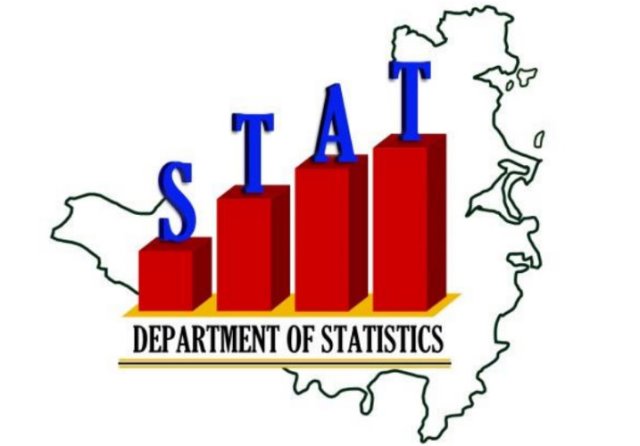PHILIPSBURG – Head of the Department of Statistics Makini Persaud Hickinson, in a press conference on Monday, January 16, announced the start of a Labour Force Survey. Present were also, Julian Lake, representing the Ministry of Tourism, Economic Affairs, Transport and Telecommunications, and Senior Statistician and Project Leader of the Labour Force Survey 2017 JoyAnn Van Arneman.
Hickinson announced that this conference’s main purpose was to “to bring as much information to the general public, so that everyone is fully aware of the details of the project, and what can be expected.”
This “major household survey” is set to target a random sample of 1,200 households across the Dutch side of St. Maarten. The topic of focus will be the current labor market on St. Maarten, where a number of questions will be asked to persons, within the selected households, about whether they are employed or not. Then some specific questions will be asked about their job situation.
This study was last conducted on St. Maarten in 2013 by STAT, and “given the fact that we aim to carry out such an inquiry at least once each year, you can see that we are past due at the moment,” Hickinson stated. However, “based on the input of all respondents as a whole, STAT will be able to draw new conclusions, and report on whether economic variables such as, unemployment, youth unemployment, income levels are improving or deteriorating on the island.”
According to Hickinson, this survey will, “enable us to provide policymakers with facts that they can use to then assist the community, and specific groups, in particular, who may need special attention. These groups can include young persons, single mothers, persons who have reached a certain age, and find themselves needing to change jobs and so on.”
She asked for the general public to give its full support to the service, which started yesterday, Monday. The data collection should take 6-8 weeks maximum.
Van Arneman gave further details on how the field work would be carried out, and what type of questions households can expect. Some 10 interviewers will be going out into the field. The survey has four major sections, each of which should be expected to take about 10 minutes to complete, depending upon the responses of the household.
The first section is general questions, which establishes the makeup of the household, like if it’s an extended or immediate family, and information about gender, and age.
The second section is about past and current education. “Just so that we can establish and make links between education, and the labor market and, who has jobs, what kind of jobs they’re going into, etc.” Van Arneman stated.
The third section is a section on employment status, on whether they’re unemployed, looking for work, retired, working currently, “as well as some specific information about the type of job they’re doing, whether they’re contracted, whether they’re full-time or permanent employees, and the different benefits, etc., that are offered at their place of work,” she continued.
The final section is a short section on income to establish the income levels of those different age groups, and the different demographic groups established in the previous sections. The entire survey should take about 40-45 minutes to complete.
When asked how STAT randomly selected these households, Hickinson said that from14,000 plus households, “we came up with a sample size of more or less 1,200, and these were representative over the eight districts of the island. So it’s a cross-section. It’s a pre-assigned list of households that we will give to the interviewers that they should approach.”
In response to why STAT had such a long pause from 2013 to 2017, Hickinson said that although the aim was to conduct yearly surveys this couldn’t be done. “We’ve had a number of other household major national surveys that we conducted, and we’re still a small team, we were not able to conduct everything at once. In 2014, we had the whole school listing survey. In 2015, we did a whole school budget survey, and this survey was scheduled to start last year, but due to different circumstances, we weren’t able to have the project funds approved on time to start last year, and that’s why we are starting as the year has opened. This would be our first major undertaking,” she explained.
Completion of this survey is slated for March 11, and preliminary results should be ready by the end of May 2017.
Interviewers had to undergo specific training before they go into the field. There were “five evenings of training last week, where we gave intensive information on what the survey is about, what we need them to do, how we need them to approach the project,” Hickinson continued.
Persons refusing to participate were assured that STAT “will not be passing the data on to any third parties to any other government departments,” however, “if the response rate is not to a sufficient standard that we’re able to use the data, then we are looking into things like fines, or different measures that can be taken.” Hickinson encouraged persons to participate, as the “data is used strictly for calculation of group statistics. It’s all done in percentages and grossed up. So the information is safe. All of the interviewers have to sign confidentiality agreements, and this is really used to benefit the people.”
Some of the data expected is an overview of youth unemployment, which “has been in the double digits. In 2011, we were around 29% and then in 2013, we saw that it went down a bit to 27.5%, which was in the right direction, but still quite high, and since then I know the Labor Department had a number of programs,” she said.
“We just wanted to sensitize the public and let them know that within the upcoming weeks there will be interviewers knocking on some doors, and asking for their support, and once we have collected the data, done the processing and analysis, we will be sharing that with the public via our website, and also having stakeholder presentations,” she stated.
The all-female team will be knocking on doors throughout the day and into the evenings, however, interviewers will not start interviews past 7:30pm. The cut off times will be between 7:30pm and 8:00pm at night.






























